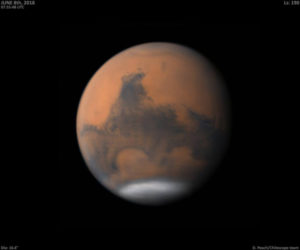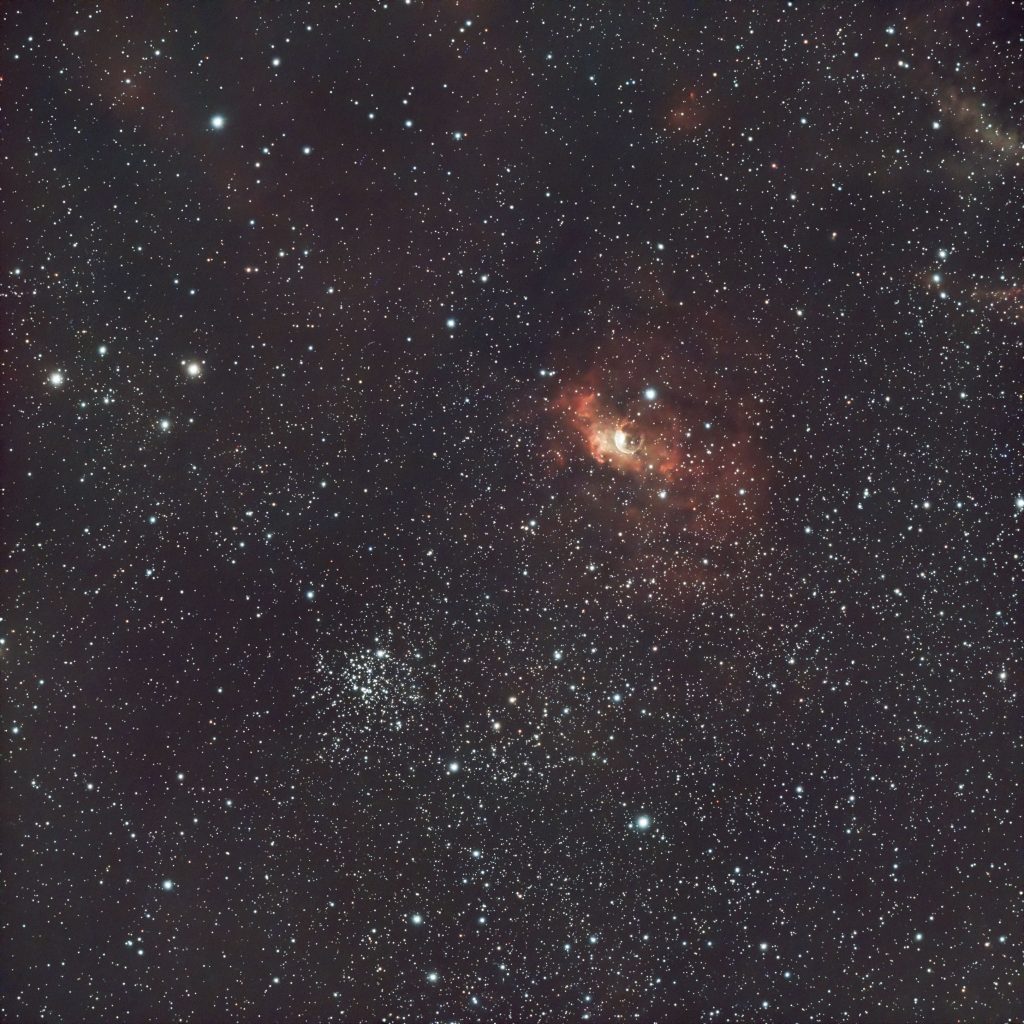Enjoy this spectacular new artist’s animation of the Milky Way Galaxy based on data from ESA’s Gaia space telescope. Gaia has changed our impression of the Milky Way. Even seemingly simple ideas about the nature of our galaxy’s central bar and the spiral arms have been overturned. Gaia has shown us that it has more than two spiral arms and that they are less prominent than we previously thought. In addition, Gaia has shown that its central bar is more inclined with respect to the Sun. No spacecraft can travel beyond our galaxy, so we can’t take a selfie, but Gaia is giving us the best insight yet of what our home galaxy looks like. Once all of Gaia’s observations collected over the past decade are made available in two upcoming data releases, we can expect an even sharper view of the Milky Way.
Share This:Recent Astronomy Articles at Cosmic Pursuits
Guide to Observing Mars in 2025

The planet Mars is one of the most interesting planets to observe with a small telescope, but also one of the most difficult. The planet only gets close enough to Earth to give up much detail just once every 780 days (about two years and two months), and when it does make an apparition, it still appears relatively small compared to Jupiter or Saturn. But observing Mars is worth the effort. It’s the only planet to reveal an appreciable amount of surface detail in a small telescope, and it also features occasional surprises such as dust storms and local fogs and cloud banks.
Seeing Mars takes a little practice, however, as well as the right tools for the job. This guide will help you understand what you can see on the surface of Mars, especially near the opposition of January 15-16, 2025. And it will help you get the best view of this remarkable world with a telescope and a few essential accessories [Read more…] about Guide to Observing Mars in 2025
Share This:Ten Favorite Night Sky Images of 2024
In this last article of 2024, I share with you ten of my favorite images of the night sky that I captured this year. I hoped to do more visual observing over the past 12 months, and I did manage to work through my lists of double stars and carbon stars in the winter and spring. But I also wanted to record images specific objects as well as interesting regions of the night sky as part of a lifelong goal to understand the layout of our own galaxy. Also, in my line of work, I need to keep up some technical skills and an understanding of astrophotography. So, I figured as I learn I might as well capture images of something good. Here are some interesting vistas and events from 2024, most captured from my suburban backyard in Calgary… [Read more…] about Ten Favorite Night Sky Images of 2024
Share This:Sightseeing Along the Perseus Arm

As northern autumn turns to winter, the arc of the northern Milky Way reaches nearly overhead in the evening hours. Here we look into the Perseus Arm, the outermost spiral arm of the Milky Way galaxy which is flecked by dozens of sparkling open stars clusters accessible to a small telescope. This region nearly rivals the dense star fields of Scutum and Sagittarius, summer constellations which lie towards the inner arms of the Milky Way. This month, let’s take a quick tour of a few highlights of the Perseus Arm in the constellation Cassiopeia. It’s a perfect part of the sky for visual observing or for taking a few astro-snapshots [Read more…] about Sightseeing Along the Perseus Arm
Share This:A Guide to Observing Jupiter in 2024
The planet Jupiter is always one of the brightest objects in the night sky. It’s brighter than any star, and is only outshone by the planet Venus and the Moon, and, very rarely, by Mars and Mercury (when it’s too close to the Sun to observe). Jupiter reaches a position for optimum viewing in a telescope once every 13 months, roughly, and it makes its latest closest approach to Earth on December 7, 2024 at 21h Universal Time when the planet appears in the horns of the celestial bull, Taurus. A couple of months before and after this date, Jupiter is in perfect position for viewing with a small telescope, or even a pair of binoculars. You can’t miss it: the planet is by far the brightest object in the eastern sky as night gets underway in the northern hemisphere from now through March and April of 2025. The visible face of Jupiter reveals so many interesting features in a small telescope that the planet is a favorite target for new and experienced stargazers [Read more…] about A Guide to Observing Jupiter in 2024
Share This: